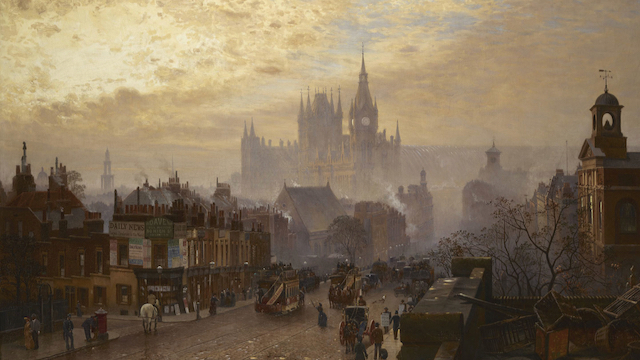
October 14, 1889: Sir Henry learned that Selden was Mrs Barrymore’s brother. [HOUN]
This, then, was the explanation of the stealthy expeditions at night and the light at the window. Sir Henry and I both stared at the woman in amazement. Was it possible that this stolidly respectable person was of the same blood as one of the most notorious criminals in the country?
“Yes, sir, my name was Selden, and he is my younger brother. We humoured him too much when he was a lad, and gave him his own way in everything until he came to think that the world was made for his pleasure, and that he could do what he liked in it. Then as he grew older he met wicked companions, and the devil entered into him until he broke my mother’s heart and dragged our name in the dirt. From crime to crime he sank lower and lower, until it is only the mercy of God which has snatched him from the scaffold; but to me, sir, he was always the little curly-headed boy that I had nursed and played with, as an elder sister would. That was why he broke prison, sir. He knew that I was here and that we could not refuse to help him. When he dragged himself here one night, weary and starving, with the warders hard at his heels, what could we do? We took him in and fed him and cared for him. Then you returned, sir, and my brother thought he would be safer on the moor than anywhere else until the hue and cry was over, so he lay in hiding there. But every second night we made sure if he was still there by putting a light in the window, and if there was an answer my husband took out some bread and meat to him. Every day we hoped that he was gone, but as long as he was there we could not desert him. That is the whole truth, as I am an honest Christian woman, and you will see that if there is blame in the matter it does not lie with my husband, but with me, for whose sake he has done all that he has.”

October 14, 1889: Selden was chased across the moor by Watson and Sir Henry. [HOUN]
We stumbled slowly along in the darkness, with the black loom of the craggy hills around us, and the yellow speck of light burning steadily in front. There is nothing so deceptive as the distance of a light upon a pitch-dark night, and sometimes the glimmer seemed to be far away upon the horizon and sometimes it might have been within a few yards of us. But at last we could see whence it came, and then we knew that we were indeed very close. A guttering candle was stuck in a crevice of the rocks which flanked it on each side so as to keep the wind from it and also to prevent it from being visible, save in the direction of Baskerville Hall. A boulder of granite concealed our approach,and crouching behind it we gazed over it at the signal light. It was strange to see this single candle burning there in the middle of the moor, with no sign of life near it—just the one straight yellow flame and the gleam of the rock on each side of it.

October 14, 1889: Watson and Sir Henry saw Holmes’s outline against the moor. [HOUN]
I assure you that I have never in my life seen anything more clearly. As far as I could judge, the figure was that of a tall, thin man. He stood with his legs a little separated, his arms folded, his head bowed, as if he were brooding over that enormous wilderness of peat and granite which lay before him. He might have been the very spirit of that terrible place. It was not the convict. This man was far from the place where the latter had disappeared. Besides, he was a much taller man. With a cry of surprise I pointed him out to the baronet, but in the instant during which I had turned to grasp his arm the man was gone. There was the sharp pinnacle of granite still cutting the lower edge of the moon, but its peak bore no trace of that silent and motionless figure.











 October 3, 1901: Neil Gibson wrote Holmes a letter. [THOR]
October 3, 1901: Neil Gibson wrote Holmes a letter. [THOR]




 September 28, 1889: Hosmer Angel proposed that he and Mary Sutherland should marry within the next week. [IDEN]
September 28, 1889: Hosmer Angel proposed that he and Mary Sutherland should marry within the next week. [IDEN]





